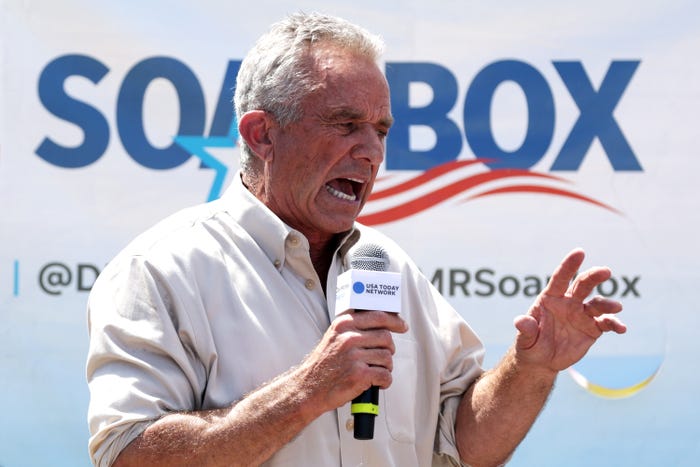Physical Address
304 North Cardinal St.
Dorchester Center, MA 02124
Physical Address
304 North Cardinal St.
Dorchester Center, MA 02124

Robert F. Kennedy Jr., a prominent figure in American politics and environmental advocacy, has recently garnered attention not only for his political ambitions but also for his distinctive vocal quality. As he steps into the 2024 Presidential race, many are curious about the noticeable change in his voice, which is due to a condition known as spasmodic dysphonia.
Spasmodic dysphonia is a chronic neurological disorder affecting the voice muscles in the larynx, or voice box. This condition is characterized by involuntary spasms that cause the voice to break up or to have a tight, strained, or strangled sound. Spasmodic dysphonia can significantly impact a person’s ability to communicate and, by extension, their quality of life.
There are two main types of spasmodic dysphonia: adductor spasmodic dysphonia, where the vocal cords close together too tightly, and abductor spasmodic dysphonia, where the vocal cords open too widely. In Kennedy’s case, it is the adductor type that affects his ability to speak smoothly, leading to a strained and harsh voice quality.
Diagnosing spasmodic dysphonia involves a comprehensive evaluation by an otolaryngologist (ENT specialist) and a speech-language pathologist. This typically includes a review of the individual’s medical history, an examination of vocal fold function using stroboscopy, and various voice assessments. Despite these measures, the condition is often misunderstood and can be misdiagnosed as other voice disorders, making the path to correct diagnosis and treatment a lengthy and frustrating one.
For Kennedy, the diagnosis came after years of experiencing changes in his voice, which initially appeared in his early forties. The impact of spasmodic dysphonia on his public speaking and personal life has been profound, influencing not only his political engagements but also his social interactions.
While there is no cure for spasmodic dysphonia, several treatment options can help manage its symptoms. Botulinum toxin injections (Botox) are the most common treatment, helping to reduce the severity of vocal cord spasms by temporarily weakening the muscles involved. These injections are typically repeated every few months to maintain the voice quality.
Voice therapy is another crucial component of managing spasmodic dysphonia. It involves working with a speech-language pathologist to develop techniques that help improve voice control and reduce strain. For Kennedy, ongoing treatment and therapy have been essential in managing his condition, allowing him to continue engaging with the public and participating in lengthy discussions without significant vocal deterioration.
The public’s reaction to Kennedy’s voice has varied, with some expressing concern or curiosity about the noticeable changes in his speech. During interviews, Kennedy has openly addressed his condition, explaining the nature of spasmodic dysphonia and its impact on his life. His candidness about the challenges he faces has helped raise awareness about this rare disorder and reduce the stigma associated with voice conditions.
Despite the difficulties posed by spasmodic dysphonia, Kennedy remains an active and vocal participant in political discourse, advocating for environmental issues and public health. His resilience in the face of this challenging condition is a testament to his commitment to his causes and his determination to not let spasmodic dysphonia silence his voice.
Robert F. Kennedy Jr.’s struggle with spasmodic dysphonia highlights the complexities of this rare neurological disorder and the importance of proper diagnosis and treatment. By sharing his experience, Kennedy has contributed to a greater understanding and recognition of spasmodic dysphonia, offering hope and support to others who live with this and similar conditions.



